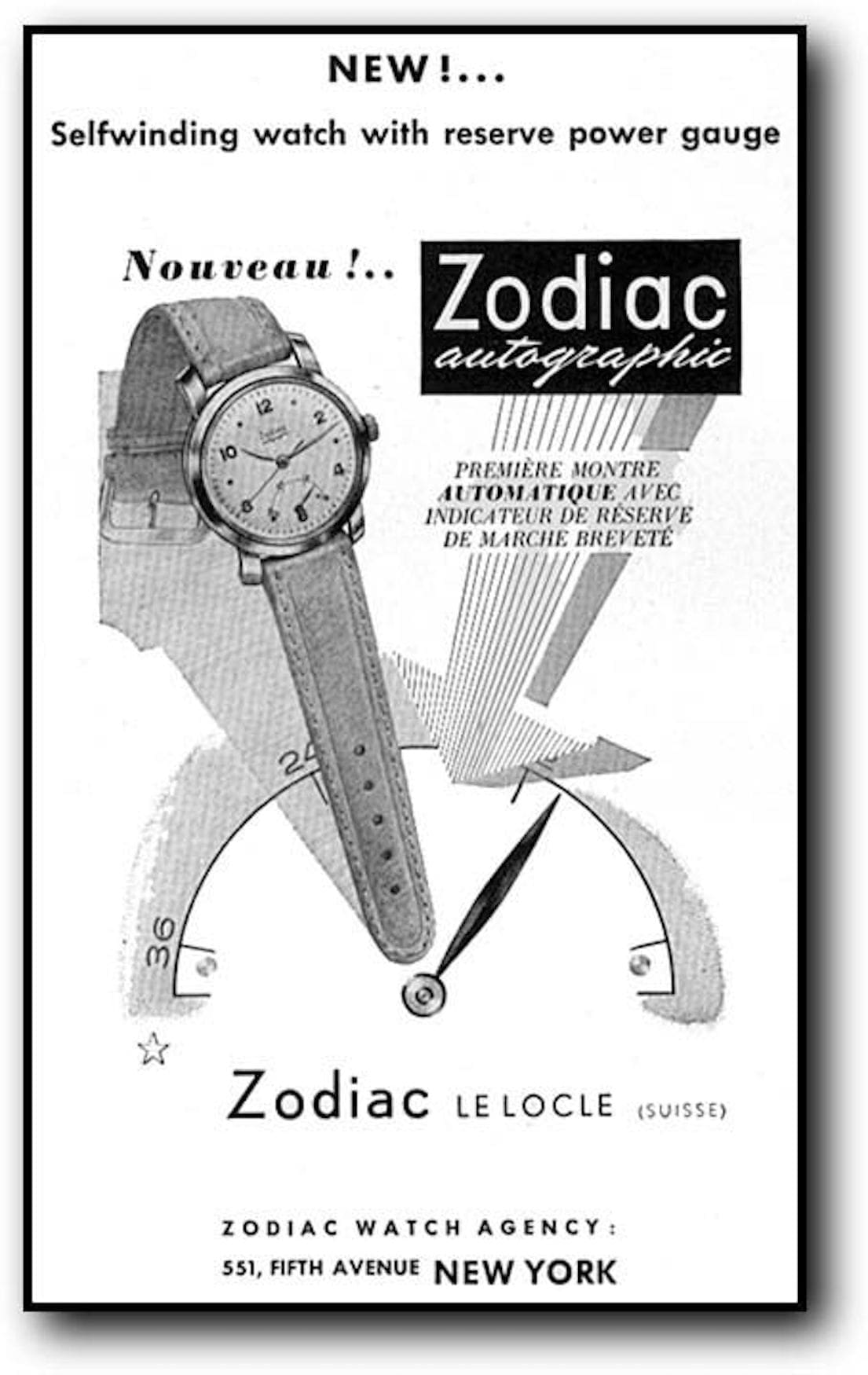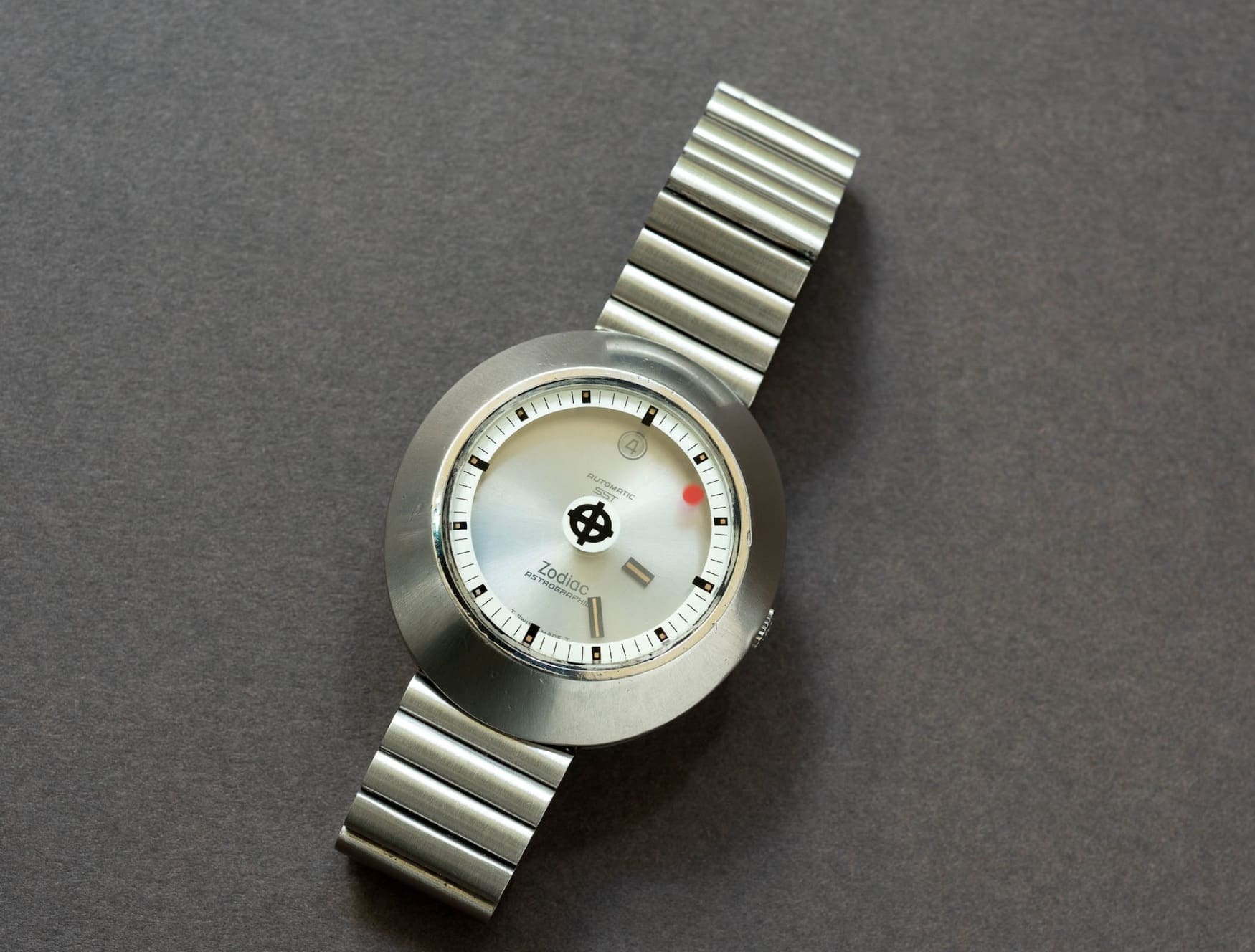Adam Reeder
Zodiac is a modern watch brand with a forward-thinking philosophy. That’s why we’ve been praising the brand so much lately. But perhaps more importantly, Zodiac is a pioneering brand. Rolex collectors often attribute their love, or even irrational adoration, of the brand to its incredible heritage and record of trendsetting innovation. If that were the criterion, I can only imagine that those same collectors’ watch boxes would be overflowing with Zodiac timepieces. Just kidding, but if we were to judge all watch brands by the same standards, Zodiac deserves to be mentioned alongside most other Swiss heritage brands, including Rolex.
Zodiac’s origins date back to 1882, when Ariste Calame, the son of a watchmaker, opened a pocket watch making workshop in Le Locle. He ran the company under his own name, but his son Louis registered the Zodiac brand in 1908. Louis took over his father’s watchmaking business in 1895 and wanted to establish it as a long-term brand. Over the next few decades, Zodiac continued to grow and become popular for its durable and reliable pocket watches. By 1924, Zodiac’s culture had shifted to innovation, and they began to truly push the boundaries of watchmaking talent.
Winning Technology

At the time, most pocket watches were relatively large and bulky. Part of this was designed to make them easier to handle and read. But it was mainly due to the limitations of watchmaking at the time. Creating a movement thin enough to limit the girth of a pocket watch was a challenge. But Zodiac rose to the challenge and in 1924 launched the Zodiac Triumph, the undisputed first thin pocket watch in history. The watch was powered by Zodiac’s robust and popular caliber 1617. The Triumph helped Zodiac build a reputation as an innovator among its Swiss peers.
Over the next decade, wristwatches began to overtake pocket watches in popularity. Like many other Swiss watchmakers, Zodiac shifted much of its efforts from designing and manufacturing pocket watches to wristwatches. But that didn’t mean that all of the innovation and creativity they had put into pocket watches disappeared. They kept on moving forward.
Zodiac’s next leap came in 1930, when the company was one of the first brands to develop watches with a patented shock protection system. They designed a movement that used a Z-shaped clip housed above the balance. This improved shock resistance, making Zodiac watches even more durable and active than before.
Even more impressive, in 1937 the brand developed a watch with an astounding eight-day power reserve, something virtually unheard of at the time, meaning the watch could be left alone for an entire week and not need to be reset when picked up again.
Zodiac Autograph

In 1949, the Zodiac Autographic was introduced at the Basel Fair in Switzerland. It was the second wristwatch with a power gauge. The Autographic is considered by many to be the first automatic sports watch ever. Zodiac went into the second half of the 20th century and was running full steam ahead. One of the most frustrating things about a mechanical watch was not knowing when it would run out of power. The Autographic solved that problem, and did so in style.
Rise of the Sea Wolves

1953 brought Zodiac perhaps the most impactful first for the Le Locle-based brand. With the release of the Sea Wolf, Zodiac claimed first place in the finish line by producing the world’s first diver’s watch released to the general public. There’s been much debate about this fact, with both Rolex and Blancpain making similar claims, but Zodiac seems to have more evidence than any other brand, so for the purposes of this article, at least, we’re giving them the win.
The Seawolf was waterproof to 430 feet and featured a rotating timing bezel – the perfect recipe for what would become one of the most popular watch styles for at least the next 75 years. It’s also why the Seawolf has been such a popular reissue over the years. Zodiac continues to release new Seawolf models that keep people excited all the time.
Floating in history


In 1969, Zodiac released the Astrographic, one of the first watches with floating hands. The Astrographic had a futuristic look when it was released in the late 1960s and still looks that way today, so much so that Zodiac continues to release new versions, just like the Sea Wolf.
Just a year later, in 1970, the Zodiac Olympus was released, one of the first and few watches with a squared-off Manta ray-like case. As with the Seawolf and Astrographic, stylish and fun reissues of the Olympus have kept the Zodiac a fan favorite, especially in our own little corner of the world.
Finally, as a little bonus, in 1977, Zodiac released the world’s first LCD watch with official chronometer certification. We had no idea such a thing existed. Apparently, we didn’t until Zodiac broke that barrier. So the next time your friend feels like waxing poetic about the great heritage of their favorite watch brand, show off your own knowledge. Now you know a brand that can pride itself on being a true innovator, and we’re sure Zodiac will remind us all of that heritage with every new product they release.
